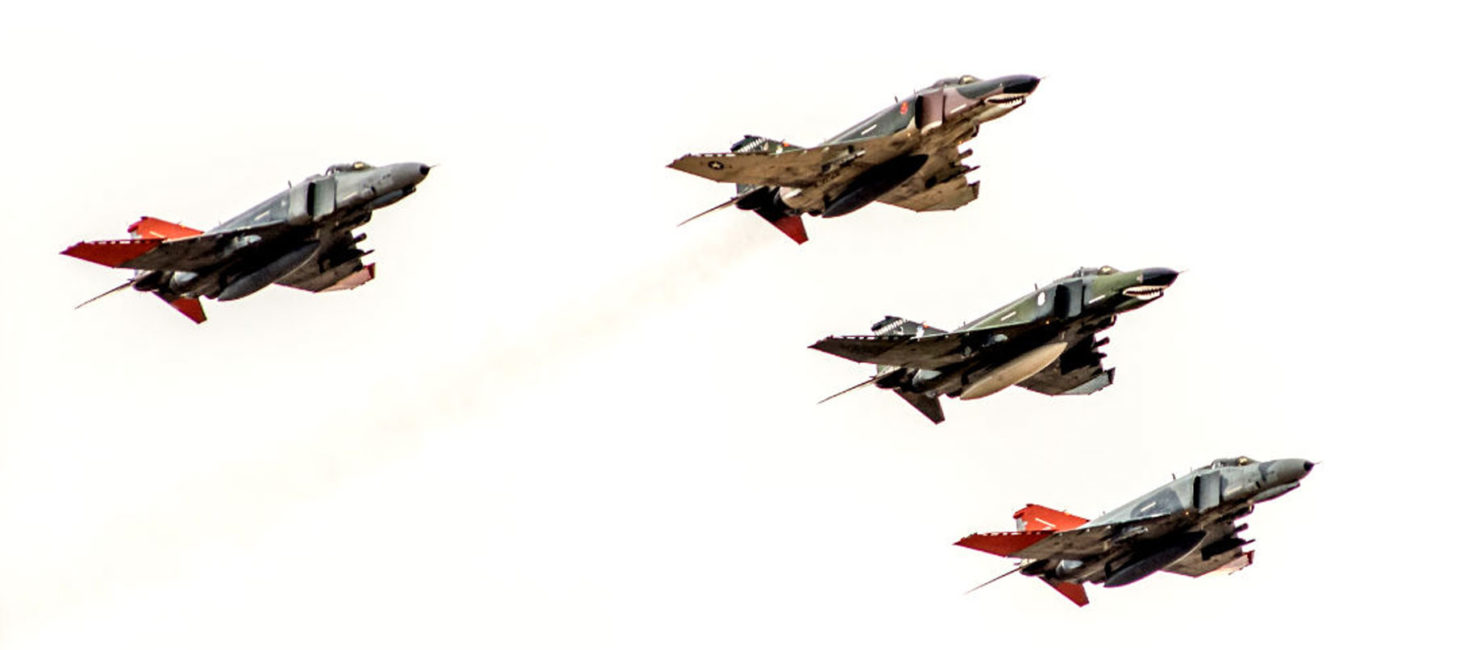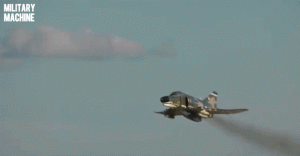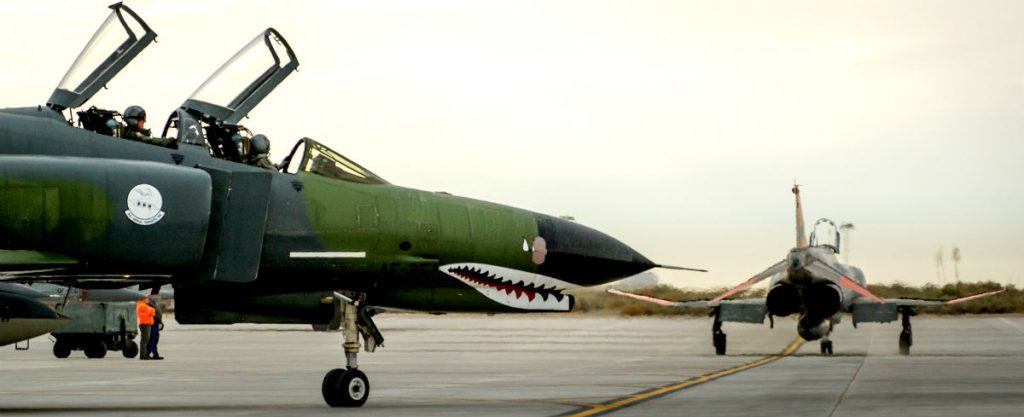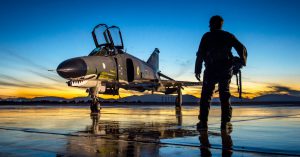The F-4 Phantom II Fighter-Bomber

The F-4 Phantom II is a multirole attack fighter-bomber developed for use for the U.S. Navy and Marine Corps. It is the product of nearly a decade of development from initial phase testing, deployment, and radical redesign. In the 1950s, military planners wanted to depart from the days of dog-fighting and advance wholeheartedly into an age they believed would be dominated purely by air-to-air missile technology. With the Navy’s requirement for a new jet fighter to patrol the airways around the fleet, McDonnell Douglas produced the F-4H1 Phantom. Capable of holding up to six air-to-air missiles and flying at speeds above Mach 2, the Phantom promised to be a glimpse into the future of military aeronautics.
The F-4 Phantom was first proposed in 1953 when the United States Navy requested an aircraft that could patrol the skies in three hour increments in a radius of 250 nautical miles. Fulfilling those requests, McDonnell Douglas produced the F-4H1 for initial testing in 1956. It was released for its first initial assignment to an aircraft carrier as the F-4B Phantom in 1961.

Flexible Design:
This two-seat, twin-engine aircraft was primarily designed for naval interdiction missions, fleet air defense (FAD), and limited bombing runs. Before it made a huge impact on the Navy’s fleet, it had to be refined several times to achieve the right wing dynamics for stable at speeds above Mach 2. In fact, the Phantom had to undergo so many changes to both its design and capabilities, that the Navy became reluctant to keep adopting additional forms of the aircraft. However, once in its final form in 1967, the F-4E proved to be a very versatile and reliable jet fighter and bomber.

Setting Records:
When the F-4 was initially brought into a finalized version for use in 1961, it broke records for its time to ascent to altitude. In 1962 alone, the F-4 Phantom broke eight consecutive records for time to altitude. Its last major achievement was for its controlled flight at 100,000 feet altitude.
Combat Deployment:
However, when deployed to support efforts in Vietnam, the F-4 Phantom performed admirably but at great cost. Over the course of its use by both the Navy and the Marine Corps, the F-4 achieved 40 combat victories with a loss of 78 aircraft. Only five were lost in air-to-air combat. The majority of these losses were due to anti-aircraft artillery (AAA). Due to the parameters of their bombing missions, the F-4s were required to fly at low altitudes. Because of the advent of advanced radar and fire control for ground air defense, enemy forces were able to quickly detect incoming F-4s and anticipate their movement to target. This rendered many of the Phantom’s key features –notably their ability to quickly accelerate and climb– utterly useless.

Oldschool Firepower:
Lessons learned through development and application in the Vietnam conflict proved that the idea of being completely reliant on missiles was a bad idea. Both the Sparrow and Sidewinder missiles commonly equipped could often be subject to electronic countermeasures. This resulted in a failure for those missiles to strike their target. The F-4E was equipped with an internal General Electric Vulcan (M61A) 20 mm, six-barrel, rotary-cannon. This allowed the aircraft to engage enemy targets should missiles fail to get the job done.

Continuous Upgrades:
With the advent of more advanced methods of electronic warfare, later versions of the F-4 incorporated cutting edge jamming pods and ground bombing sensors. This opened up the F-4 for extended use as both a fighter and a bomber. The F-4 Phantom II proved to be the pivotal moment the Navy transitioned to a true multirole jet aircraft.
The F-4 Phantom II would continue to see service until 2004. US Navy active duty use, however, ended in 1984. It was largely replaced by the F-14 Tomcat.
Powerplant:
The F-4E Phantom II is powered by twin General Electric J79-GE-17A axial compressor turbojets. Each J79-GE-17A turbojet can produce up to 11,905 lb-ft of dry thrust and 17,845 lb-ft in afterburner.
Now see more stunning F-4 images.
See F-4 Phantom Specifications
| Length: 63 feet 0 inches (19.2 m) |
| Height: 16 feet 6 inches (5.0 m) |
| Wingspan: 38 feet 4.5 inches (11.7 m) |
| Speed: Mach 2.23 (1,472 mph, 2,370 km/h) |
| Ceiling: 60,000 feet (18,300 m) |
| Maximum Takeoff Weight: 61,795 lb (28,030 kg) |
| Range: 367 nmi (422 mi, 680 km, combat radius), 1,403 nmi (1,615 mi, 2,600 km) with external fuel |
| Crew: 2 |
| Unit Cost est. $16.8 million (adjusted FY 2016, new); $2.4 million (FY 1965, new build F-4E). |
Watch This Video Of The F-4 Phantom In Action

